One in every three bites of food you take comes courtesy of a bee. Without their pollination efforts, our diet and our gardens would be, to say the least, boring. In today’s “Beyond the Garden Basics” newsletter/podcast, we talk with Dr. James Nieh, of the School of Biological Sciences at UC San Diego. He and his team have been studying how honeybees communicate with each other, and how their elaborate dance moves are interpreted by the other honeybees in the hive. Basically, if you know where all the good pollen is, shake your booty, and do the Waggle Dance!

Dr. Nieh’s original study can be found in the March 2023 issue of the Journal of Science. A more gardener-friendly version can be read at ModernFarmer.com. Or, listen to the podcast (above) or read the transcript!
TRANSCRIPT - How Honeybees Say, “Come and Get It!”
Farmer Fred 0:00
Have you heard about the Waggle Dance? No, it's not an obscure Chubby Checker record from the 1960s. Nor is it the follow up to the Soupy Sales song, “Do the Mouse”. The Waggle Dance is something bees do. And it's how they communicate to their hive mates, the other bees, telling them where the good stuff is, where the pollen is, and how to get there. iI’s a very elaborate dance. If you're like me, if you're a gardener, and you spend a lot of time in the garden, sometimes you'll just sit down and watch the bees, and wonder: “How the heck did they find these plants?” What is going on in their communication? We're talking to a gentleman who has studied this for a living. He and fellow scientists have an article published in the Journal of Science, and it's all about the Waggle Dance and how they discovered it. We're talking with Dr. James Nieh. He's the Associate Dean School of Biological Sciences at the University of California, San Diego. He's a professor in the Department of Ecology, Behavior, and Evolution. And I always like talking to university bee specialists, because they seem to have a fun job. And it sounds like you have a very interesting job. I don't know how you get the bees to slow down long enough to study their dance.
Dr. James Nieh 1:14
Thank you, Fred. It's a pleasure to talk to you. We actually don't have them stand still. We watch them as they're in motion. But you're right, it sometimes can be a challenge to move with the bees, as they're dancing.
Farmer Fred
So let's talk about the whole thrust of your paper. And if people want to read more about it, there's a very good explanation that you wrote for the March 2023 edition of Modern Farmer magazine and website. It’s called “Unlocking Secrets of the Honeybee Dance Language.” What was your impetus for studying this?
Dr. James Nieh 1:45
One of the things we wanted to learn is, why is it that some animals, like human beings, songbirds, and naked mole-rats, why do they have to learn language? We know that other animals, many of them are actually born with the ability to have a perfect animal communication system or animal language without the need for learning. That is what actually motivated us to look at honey bees, because honey bees have a very sophisticated animal language. And we suspect because it is so complicated, that learning might be involved.
Farmer Fred 2:18
And we have known for a few decades that bees do communicate by movement, haven't we?
Dr. James Nieh 2:24
Yes, that's right. In fact, it was something that Aristotle even suspected thousands of years ago. Although if you look at the translation, there's a little bit of uncertainty if he knew about the Waggle Dance. But some historians of science say that he did. And it really is a Waggle Dance, it is a shake your booty. But what is amazing is the amount of information that is communicated via a bee to the fellow bees about where the pollen is, and how to get there. It's truly remarkable. And it's the most complex example of animal language that communicates something like location that we know of.
Farmer Fred 3:01
And also according to your paper, the movement also reveals the quality of a pollen resource.
Dr. James Nieh 3:06
That's right. When bees are repeating this figure-eight motion multiple times, the more times they repeat it, the higher the quality of the resource. And there are two motions, there's the waggle phase, if you imagine the bee as a little arrow, she's running forward with her head pointed forward, and her abdomen is waggling. So that's called the waggle run because she's running while waggling. And then there's something called the return phase where she's returning back in a semicircle. And that creates one half of the figure eight. And that return phase is faster, the more excited she is about the food. So it's almost as if she's more eager to come back and do more Waggles.
Farmer Fred 3:45
And is this just happening at the hive? Anybody who's sat for a while and watched bees at work, they'll sometimes think, “oh my goodness, I'm going to be stung. Look at that bee as it's going after that pollen. It’s shaking its behind at me, like it's getting its sting, getting ready to come at me.” But they're just communicating.
Dr. James Nieh 4:07
They would normally do this only at the nest. And it's true that they can sometimes do it, especially when the nest is crowded, on the outside of the nest. So if you have a standard wood box, kind of on the board standing in front. But typically they're going to be doing it inside the nest, you can see a bee flying around and moving at food sources. But that's not the Waggle Dance. That's something very different.
Farmer Fred 4:28
Oh, maybe the are gonna sting me after all. By the way, let's figure out the sex of bees here that do go out foraging. Are they females or males?
Dr. James Nieh 4:38
All the bees that are foraging or doing any work at all are females. The males only have one job, and when that job is done, they die.
Farmer Fred 4:45
Oh, okay. Sad life but no. The Waggle Dance and the intricacy of their instructions are dependent upon not only being born with some of that knowledge, but also learning tips from others.
Dr. James Nieh 4:49
That's right, the honeybees in a colony we discovered are actually learning how to dance from older and more experienced honey bees.
Farmer Fred 5:10
That's great. As long as, I guess, there are older bees around. You've done experiments where you have isolated the bees from the older generation.
Dr. James Nieh 5:18
That's right. And it's very interesting. Honeybees have a division of labor, meaning that they do different jobs depending on how old they are. When honeybees first emerged as adults, they start off as nurse bees, you're taking care of the larvae, and also the queen. Then, as they get older into their teenage days, you might say, because they don't live for years, they live for about 35-45 days, they start taking out the trash and building the comb, doing chores around the house. And then finally, when they get older, they start to work as a guard bee. And as a forager. And of course as a forager, then they start to Waggle Dance. So the key is, if you start out with a colony that's created only with day-old bees, they are all the same age, and then they're going to march through this progression of jobs with each other. So they really have no opportunity to observe Waggle dancers because no one in the colony is of Waggle dancing age.
Farmer Fred
So I would imagine that group wasn't very successful.
Dr. James Nieh
They actually were able to produce Waggle dances that we could definitely recognize. But in comparison to control colonies that had the same number of bees, but they had bees of all ages, and therefore they could observe and did observe other bees before they first danced. The experimental colonies were the ones that only had young bees, they could never watch older bees dance. And they had three problems in the way they danced. The first is they didn't communicate the direction very well. The second is they over-communicated the distance, meaning that they overshot where they were telling other bees to go. And thirdly, they had dances that didn't have the correctly formed figure eight pattern, those bees that had those difficulties.
Farmer Fred 7:05
Did you reintroduce them to an older generation of bees? And did their dance evolve because of that exposure to the older bees?
Dr. James Nieh 7:14
Great questions. So we came back 20 days later, when they were full adults, they had now achieved 95% of their full life expectancy. In the case of bees, they don't actually perform poor dances at this age, they're basically at their peak. And what we found is that the bees that weren't dancing very well, they were able to improve how they communicated direction and making properly formed figure eight dances. In those two aspects, they got better. But the thing about overshooting the distance, communicating distances that were too far away, that was something that they never recovered. We also did a preliminary experiment that we didn't report about in this paper. But we actually introduced another group of young bees, and had them be taught, in essence, by these older bees that were raised in the experimental colony. What we found is that these bees that were taught had normal direction and communication, they also did the normal figure eight pattern, but they learned, strangely enough, the incorrect distance encoding. So it seems that communication of distance, and the way it was disrupted, could be passed on from one generation to the next.
Farmer Fred 8:30
A very good argument for keeping the old people around awhile.
Dr. James Nieh 8:33
Exactly. They do need to learn and teach the young ones.
Farmer Fred 8:37
Yes. How do they point out the direction? Does it have to do something with the sun, I would imagine?
Dr. James Nieh 8:42
Yes, I think the the easiest way to think about it is what the dance probably was before it evolved to it's more complicated state. All honeybee species can produce the Waggle Dance. And all of them can do it on a horizontal surface, literally pointing at the direction of the resource. So I think that's the easiest way to think about it. Imagine that the honey bee, she's a little mapmaker. And what she's doing with her body is she's pointing forward with her head like an arrow. And she is pointing in the direction of the food source. So literally, if the food source is north, she's pointed north, if it's east, she's pointed east. Now, in that Waggle run, she's pointing in the direction, but also the farther away the food sources, the longer the waggle. So for example, if the food source is a mile away, she might be waggling about one second. But if it's two miles away, she might be waggling for about two seconds. So she's kind of showing in this little arrow that she's drawing, the direction and how far away it is. It's amazing. But you had brought up gravity, which is a really interesting point. So what if you can no longer dance, pointing directly at the food source? Honeycombs are vertically oriented? And in this case, they do a transposition and that's kind of a fancy word. But basically, if they're dancing on a vertical surface, and this is normally in the darkness of the nest, if they are dancing with their head, like an arrow pointed straight up, it means fly in the direction of the sun. Now, I don't mean fly into the sun, but I mean flight in the direction the sun, so imagine the sun on the horizon, and you're going to fly towards the sun on the horizon, and that will give you the right direction. Now, what about if the food source is opposite the direction of the sun, it's 180 degrees opposite the sun. Then the dancer will dance with her head, like an arrow pointing straight downwards. When she is inside the hive. Let's say the food source is 45 degrees to the left of the sun, then she dances 45 degrees to the left of the upright position.
Farmer Fred 10:54
I would think that bees would start their day when a certain temperature is reached. Or do they start their workday when the sun is out?
Dr. James Nieh 11:04
I think both factors are important. They need a certain minimum temperature in order to be able to fly. But typically they have a very strong circadian rhythm, meaning that like us, they're very influenced by the sun. And folks might appreciate now that we just sprung forward with our clocks, that for a little while, it's hard for us to wake up and get going at the right time. And the reason for that is that we have a certain biological rhythm that is responsive to the light. And the same is true of honeybees.
Farmer Fred 11:32
I think bees are much like me on my bicycle. I don't like to ride when it's windy. And bees, I would think if it's a windy day, they too wouldn't be waggling very much.
Dr. James Nieh 11:43
It's true that if they face some problems, I think they can still fly even with a somewhat significant wind. But if it's too windy, they probably wouldn't go out and forage. They just stay inside the nest.
Farmer Fred 11:54
Indeed. And that's why it's harder for almond growers in California to have enough good days in a row to get their almond crop pollinated. Do native bees have the same sort of skills, or is this something just reserved for honeybees?
Dr. James Nieh 12:08
So the only bees that can communicate the location of food sources are honeybees and stingless bees. Stingless bees are only found in the tropics, they are found in the New World tropics, like Brazil and Central America. And they are found in the Old World tropics and Africa, and Southeast Asia, but they're not found anywhere in the United States. So the only bees we have around here that can actually communicate food location are honeybees.
Farmer Fred 12:35
So the purpose of native bees, I guess, is… I don't know. What is the purpose of native bees?
Dr. James Nieh 12:41
So native bees are really important because they are here as part of our native ecosystem. And they've evolved along with many species of native plants, for example, if you've ever seen a barrel cactus, these are beautiful cacti that you find and they often have these beautiful yellow or other colored flowers. There is a cactus bee that specializes in, believe it or not, in pollinating barrel cacti. Honey bees will visit these flowers and can pollinate them. But when researchers have studied this, the native bee that's evolved or co-evolved with this cactus is actually a much better pollinator when she visits. Many more seeds come out of that one visit than on a single honeybee visit. And that story is recapitulated over and over again, with many different kinds of bees. We will have buffalo gourd and many other kinds of plants where although honeybees can do the job, that native species is actually better. So I'll give you an example. Most folks like avocados. And avocados are a big crop, especially in Southern California. The native pollinator of avocados is a stingless bee, because avocados evolved in areas where there were stingless bees. Honeybees nowadays, of course, are brought in to do the job. But they are actually less efficient at it than the native bee. But unfortunately, we don't have stingless bees in this range. So I think that illustrates some of the importance of native bees for native plants, but also for certain agricultural crops. And I'll just add one final thing: we think about apples, and apples are wonderful. It turns out that native bees are better at pollinating apples than honey bees.
Farmer Fred 14:30
I did not know that apples required the attention of native bees. That's very interesting.
Dr. James Nieh 14:36
So there is a blue orchard bee that is important for pollinating apples. I think I have that right. But I do know it is a native bee. And you're right. Apples were really not native to North America. They were brought over. You think about the story of Johnny Appleseed. But in fact, even though they are introduced, it's the native bee that turns out to be much better than honey bees. I think that illustrates the importance of these very diverse native bees.
Farmer Fred 15:06
Going back to the avocado and the special bee it takes to pollinate the avocado. And maybe I should say not a special bee, but a bee that's better at pollinating. Because avocados have “A” flowers and “B” flowers, that open up at different times of the day, so basically, they're only available for certain hours of the day, I would think that the stingless bee would have to visit that tree twice in the same day to achieve successful pollination for that avocado tree.
Dr. James Nieh 15:30
That's interesting. I actually haven't read the literature specifically on how it pollinates the avocado, but it's quite possible that it’s like a honeybee going after the nectar or the pollen. That forager will go back to that same tree or that same grove multiple times throughout a day. So even though the flowers are open at different times of day, the bee will be there and be able to collect that pollen and then subsequently pollinate the female flowers.
Farmer Fred 16:00
One more thing about the Waggle Dance. And I love this part, too. You point out in Modern Farmer the fact that back at the hive, they have a dance floor.
Dr. James Nieh 16:07
That's right, and the dance floor is very different for each colony. Now part of that difference is that parts of it are relatively empty, or may have honey or may have pollen or may have brood. But in a natural colony, the ones that are built in trees, these typically don't have the beautiful flat combs that they have in beehives that humans provide. Because our goal is for beekeepers to have something very uniform that's easy to remove, check and harvest honey from inside. A natural colony, these combs are built. And then they sort of merge together and grow. I think if you've looked around on the internet or actually seen a natural colony, you'll see that they make these beautiful, complicated shapes. And I think that's very interesting, because it means that those shapes might be hard for a bee to Waggle Dance on because they're not perfectly flat. And we suspect that one of the reasons why bees may need to learn to Waggle is that through practice, they can master the dance floor that is in their own colony.
Farmer Fred 17:09
Without the benefit of a band, either. I would think your research isn't over. There's a lot more to learn about the relationship between younger bees and older bees, isn't there?
Dr. James Nieh 17:18
That's right. We would really like to understand if this distance encoding is transmitted from one generation to the next. And moreover, if it is, as we suspect, is actually adaptive, so each colony lives in a certain habitat, local environment where food is available, and where bees have to go certain distances. We think that each colony might have a dialect that is subtly adapted to those local conditions. Because that would be another reason for bees to need to learn how to Waggle Dance so they could learn from the wisdom of their elders, the bees that have been out there and know where the food is, and know the best way to communicate where that food is.
Farmer Fred 17:59
Just another example of the commandment, “Honor Thy Father and Thy Mother.”
Dr. James Nieh 18:03
Exactly. Very important.
Farmer Fred 18:06
You can read more about what Dr. James Nieh wrote about regarding the Waggle Dance, bees, and pollination by visiting modernfarmer.com and reading Dr. Nieh’s article that he wrote for “The Conversation”, that was reprinted by Modern Farmer. Or, you can go back to the source work that they published in the Journal of Science, the March 2023 edition, entitled, “Social Signal Learning of the Waggle Dance in Honeybees.” Why are we talking about this? Because one out of every three bites of food that you stick in your mouth comes to you, courtesy of a bee. Without bees, we wouldn't have much food. You want to disagree with that?
Dr. James Nieh
I totally agree that bees, honey bees, and native bees are very important.
Farmer Fred
Dr. James Nieh, with UC San Diego. He is the Associate Dean of the School of Biological Sciences. He is a professor of the Department of Ecology, Behavior and Evolution. And it's just a fascinating study about how bees communicate, by basically shaking their booty. It's the Waggle Dance. Doctor, I thank you so much for all this good information.
Dr. James Nieh 19:17
Thank you. It's been a pleasure and thank you for being interested in the story.
Thank you for also listening to the Garden Basics with Farmer Fred podcast! It’s available wherever you get your podcasts. Please share it with your garden friends.
Fred Hoffman is also a University of California Cooperative Extension Master Gardener in Sacramento County. And he likes to ride his bike. Except when it’s windy…just like bees.






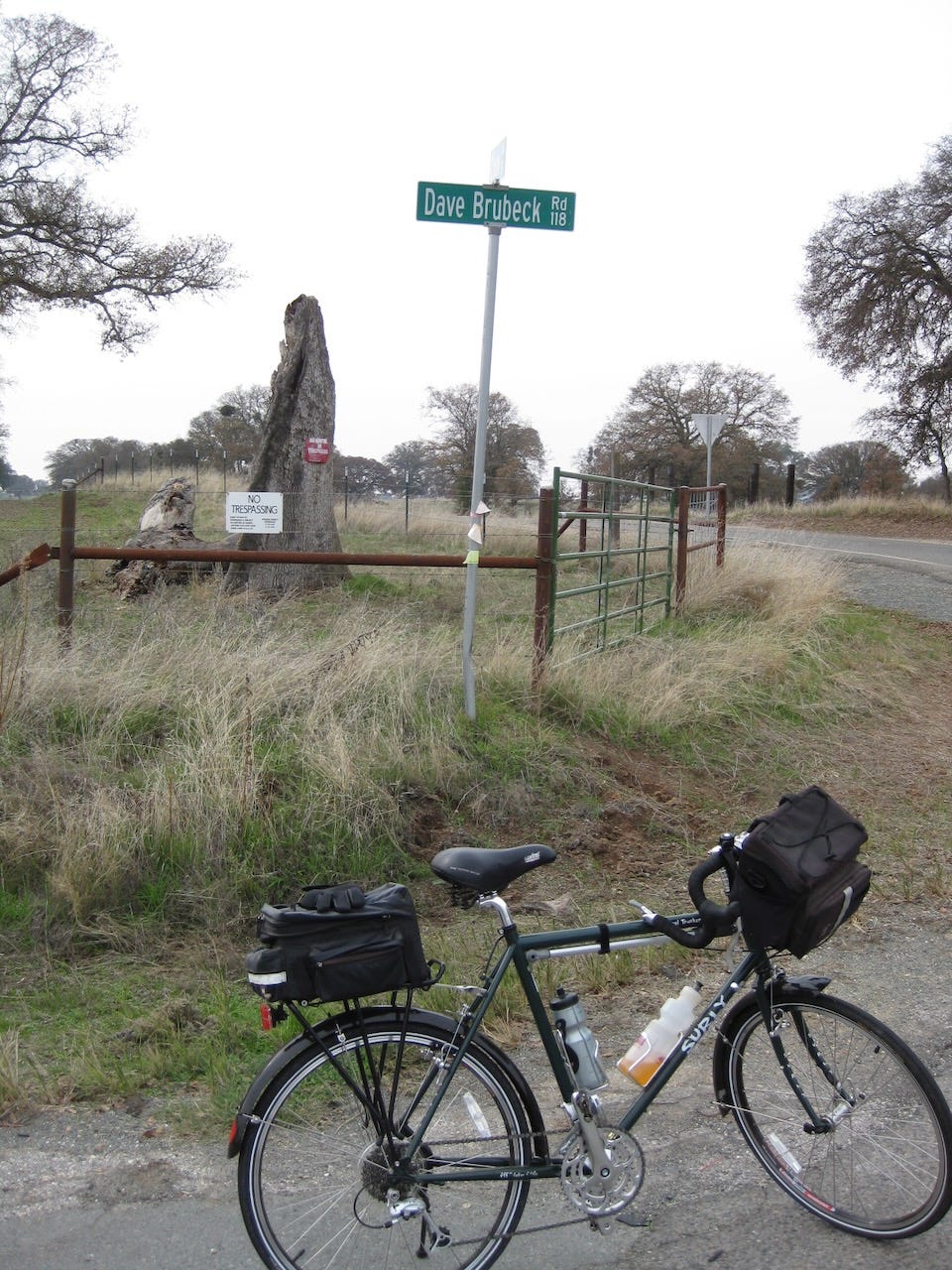


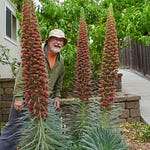

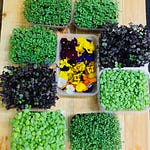
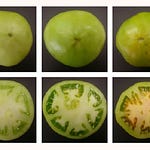

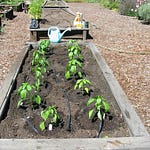
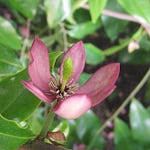
Share this post